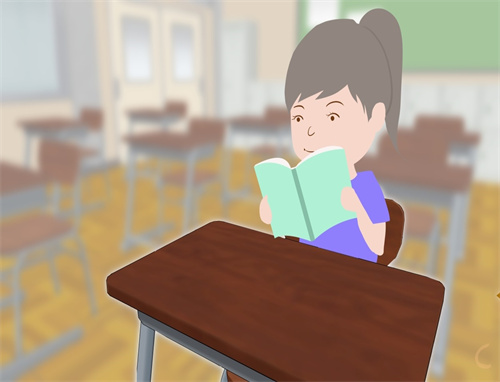托福阅读提升理解能力从词汇开始
托福阅读文章理解能力如何提升?了解阅读原理才能找到提分方法。下面小编就和大家分享托福阅读文章理解能力如何提升,来欣赏一下吧。
托福阅读提升理解能力从词汇开始
词汇是阅读基础。当你有了丰富词汇的基础,就要开始着手进行“输入”的过程了。输入的方式很多,有跳读、指读、唇读、默读、寻读、研读等等。而我们在输入信息的时候,也不会仅仅拘泥于其中的一种阅读方式,更多情况之下,是结合了其中的多个来进行的。
比如通过跳读把握文章的中心意思、段落结构、作者态度;通过寻读找到关键信息;通过研读解决对应的题目。不管运用怎样的方式,最终的目的是要记住、并正确理解文章内容及其隐含的意义。所以,想要提高“阅读速度”,真正要锻炼的是“理解能力”。
先来说一下“记住”,这似乎又回到“词汇”的部分了。篇章的记忆可以借鉴词汇的记忆方法,比如图像、联想等。另外,“记笔记”也是帮助记忆篇章的好办法。把一些重要的信息、关键的词、甚至文章的结构用笔纸记录下来,不但可以协助记忆,还以为把握文章的中心和逻辑框架,从而更好地理解文章。由此可见,“记住”和“理解”是分不开的。理解了才能记住,记住了才能从更大的角度去理解。
如何提高托福阅读的理解能力?
1. 理清句子成分结构
首先,我们在读句子的时候,要注意理清句子成分和结构,要知道各成分的意思以及它们之间的逻辑关系,要能够正确把握这些成分组合起来所表达的意思。一个句子可以多读上几遍,通过重复的练习,达到能够正确“拆解”和“重组”句子的目的。
2. 反复阅读提升信息获取能力
其二,对于篇章而言,也是一个反复的过程,但是和句子的训练有些不同。先准备一篇合适的文章,掐时间阅读,要求自己在规定的时间之内尽可能多地摄取信息。然后在同样的时间之内,将这篇文章再读一遍, 那么第二遍摄取到的信息必然比第一遍多, 接着反复进行几次。在这样的过程当中,眼睛是在迅速掠过已知的信息,去寻求新的信息点,其实就是在进行快速阅读。它不是真正强调视线的转移,而是在浏览全篇的同时,怎样去获得更多的新信息,更快、更准地把握整个语篇的主旨。
托福阅读真题原题+题目
Archaeological literature is rich in descriptions of pot making. Unlike modern industrial potters, prehistoric artisans created each of their pieces individually, using the simplest technology but demonstrating remarkable skill in making and adorning their vessels.
The clay used in prehistoric pot making was invariably selected with the utmost care: often it was traded over considerable distances. The consistency of the clay was crucial: it was pounded meticulously and mixed with water to make it entirely even in texture. By careful kneading, the potter removed the air bubbles and made the clay as plastic as possible, allowing it to be molded into shape as the pot was built up, When a pot is fired, it loses its water and can crack, so the potter added a temper to the clay, a substance that helped reduce shrinkage and cracking.
Since surface finishes provided a pleasing appearance and also improved the durability in day-to-day use, the potter smoothed the exterior surface of the pot with wet hands. Often a wet clay solution, known as a slip, was applied to the smooth surface. Brightly colored slips were often used and formed painted decorations on the vessel. In later times. Glazes came into use in some areas. A glaze is a form of slip that turns to a glasslike finish during high-temperature firing. When a slip was not applied, the vessel was allowed to dry slowly until the external surface was almost like leather in texture. It was then rubbed with a round stone or similar object to give it a shiny, hard surface. Some pots were adorned with incised or stamped decorations.
Most early pottery was then fired over open hearths. The vessels were covered with fast-burning wood; as it burned, the ashes would all around the pots and bake them evenly over a few hours. Far higher temperatures were attained in special ovens, known as kilns, which would not only bake the clay and remove its plasticity, but also dissolve carbons and iron compounds. Kilns were also used for glazing, when two firings were needed. Once fired, the pots were allowed to cool slowly, and small cracks were repaired before they were ready for use.
1. What does the passage mainly discuss?
(A) Why archaeologists study prehistoric pot making
(B) How early pottery was made and decorated
(C) The development of kilns used by early potters
(D) The variety of decorations on Prehistoric pottery
2. The word meticulously in line 7 is closest in meaning to
(A) heavily
(B) initially
(C) carefully
(D) completely
3. Which of the following was a process used by prehistoric potters to improve the texture of the clay?
(A) adding temper
(B) removing the water
(C) beating on the clay
(D) mixing the clay with plastic substances
4. The word durability in line 13 is closest in meaning to
(A) quality
(B) endurance
(C) adaptability
(D) applicability
5. Prehistoric potters applied slips and glazes to their vessels in order to do which of the
following?
(A) Improve the appearance of the vessels
(B) prevent the vessels from leaking
(C) Help the vessels to dry more quickly
(D) Give the vessels a leather like quality
6. Which of the following was a method used by some potters to give vessels a glassy finish?
(A) Smoothing them with wet hands
(B) Mixing the clay with colored solutions
(C) Baking them at a very high temperature
(D) Rubbing them with a smooth hard object
7. The word incised in line 20 is closest in meaning to
(A) designed
(B) carved
(C) detailed
(D) painted
8. The word they in ling 27 refers to
(A) kilns
(B) firings
(C) pots
(D) cracks
9. According to the passage , the advantage of kilns over open fires was that the kilns
(A) required less wood for burning
(B) reached higher temperatures
(C) kept ashes away from the pots
(D) baked vessels without cracking them
10. Look at the terms temper (line 10), glazes (line 16), kilns (line 24), and compounds (line 25).
Which of these terms is NOT defined in the passage ?
(A) temper
(B) glazes
(C) kilns
(D) compounds
11. The passage mentions that when pottery is fired under burning wood, the ashes help
(A) prevent the clay from cracking
(B) produce a more consistently baked pot
(C) attain a very high temperature
(D) give the vessel a glasslike finish
PASSAGE 49 BCCBA DBCBD B
托福阅读真题原题+题目
Hunting is at best a precarious way of procuring food, even when the diet is supplemented with seeds and fruits. Not long after the last Ice Age, around 7,000 B.C. (during the Neolithic period), some hunters and gatherers began to rely chiefly on agriculture for their sustenance. Others continued the old pastoral and nomadic ways. Indeed, agriculture itself evolved over the course of time, and Neolithic peoples had long known how to grow crops. The real transformation of human life occurred when huge numbers of people began to rely primarily and permanently on the grain they grew and the animals they domesticated.
Agriculture made possible a more stable and secure life. With it Neolithic peoples flourished, fashioning an energetic, creative era. They were responsible for many fundamental inventions and innovations that the modern world takes for granted. First, obviously, is systematic agriculture — that is, the reliance of Neolithic peoples on agriculture as their primary, not merely subsidiary, source of food.
Thus they developed the primary economic activity of the entire ancient world and the basis of all modern life. With the settled routine of Neolithic farmers came the evolution of towns and eventually cities. Neolithic farmers usually raised more food than they could consume, and their surpluses permitted larger, healthier populations. Population growth in turn created an even greater reliance on settled farming, as only systematic agriculture could sustain the increased numbers of people. Since surpluses of food could also be bartered for other commodities, the Neolithic era witnessed the beginnings of large-scale exchange of goods. In time the increasing complexity of Neolithic societies led to the development of writing, prompted by the need to keep records and later by the urge to chronicle experiences, learning, and beliefs.
The transition to settled life also had a profound impact on the family. The shared needs and pressures that encourage extended-family ties are less prominent in settled than in nomadic societies. Bonds to the extended family weakened. In towns and cities, the nuclear family was more dependent on its immediate neighbors than on kinfolk.
1. What does the passage mainly discuss?
(A) Why many human societies are dependent on agriculture
(B) the changes agriculture brought to human life
(C) How Neolithic peoples discovered agriculture
(D) Why the first agricultural societies failed
2. The word precarious in line 1 is closest in meaning to
(A) uncertain
(B) humble
(C) worthy
(D) unusual
3. The author mentions seeds and fruits in line 2 as examples of
(A) the first crops cultivated by early agricultural societies
(B) foods eaten by hunters and gatherers as a secondary food source
(C) types of food that hunters and gatherers lacked in their diets
(D) the most common foods cultivated by early agricultural societies
4. The word settled in line 15 is closest in meaning to
(A) advanced
(B) original
(C) involved
(D) stable
5. According to the passage , agricultural societies produced larger human populations because
agriculture
(A) created more varieties of food
(B) created food surpluses
(C) resulted in increases in leisure time
(D) encouraged bartering
6. According to the passage , all of the following led to the development of writing EXCEPT the
(A) need to keep records
(B) desire to write down beliefs
(C) extraction of ink from plants
(D) growth of social complexity
7. The word chronicle in line 23 is closest in meaning to
(A) repeat
(B) exchange
(C) understand
(D) describe
8. According to the passage , how did the shift to agricultural societies impact people's family
relationships?
(A) The extended family became less important.
(B) Immediate neighbors often became family members.
(C) The nuclear family became self-sufficient.
(D) Family members began to wok together to raise food.
9. The author mentions all of the following as results of the shift to agricultural societies EXCEPT
(A) an increase in invention and innovation
(B) emergence of towns and cities
(C) development of a system of trade
(D) a decrease in warfare
10. Which of the following is true about the human diet prior to the Neolithic period?
(A) It consisted mainly of agricultural products
(B) It varied according to family size.
(C) It was based on hunting and gathering.
(D) It was transformed when large numbers of people no longer depended on the grain they grew
themselves.
PASSAGE 58 BABDB CDADC
托福阅读提升理解能力从词汇开始相关文章:
★ 托福阅读准狠的三大技巧
★ 雅思和托福到底该pick哪一个
托福阅读提升理解能力从词汇开始
下一篇:托福阅读背景知识汇总






